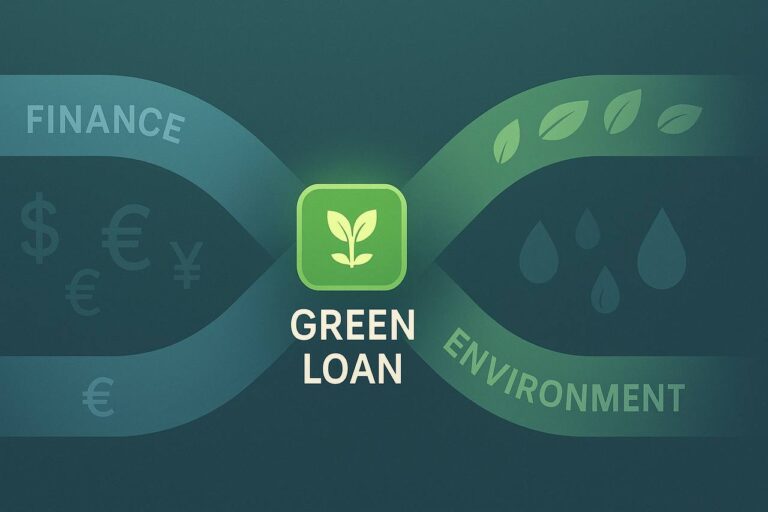What Is Green Banking? A Look at Sustainable Finance in Cambodia

Green banking is rapidly transforming the financial landscape worldwide, and Cambodia is no exception. As the global economy shifts toward sustainability, financial institutions are playing a crucial role in supporting eco-friendly projects and sustainable investments. In Cambodia, green banking is still in its early stages, but initiatives led by banks, the government, and international organizations are paving the way for a more sustainable financial sector.
This article explores what green banking is, how it is being implemented in Cambodia, and why it is essential for the country’s economic and environmental future.
Understanding Green Banking
Green banking refers to financial services that support environmentally sustainable and socially responsible investments. Unlike traditional banking, green banking prioritizes projects that promote clean energy, resource efficiency, and environmental conservation.
Key Principles of Green Banking
- Sustainable Investments: Financing renewable energy, energy-efficient infrastructure, and eco-friendly businesses.
- Ethical Lending: Prioritizing loans to businesses that comply with environmental and social standards.
- Reducing Carbon Footprints: Implementing paperless banking, energy-efficient branches, and digital banking solutions.
- ESG Considerations: Incorporating environmental, social, and governance (ESG) factors into financial decision-making.
Banks worldwide are recognizing the importance of green banking, and Cambodia is beginning to follow suit by integrating these principles into its financial sector.
The Growth of Green Banking in Cambodia
Cambodia’s banking sector has grown significantly over the past decade, with more financial institutions adopting sustainability-focused initiatives. However, the concept of green banking is still relatively new in the country.
Several major banks have started to explore sustainable finance by offering green loans and promoting environmentally friendly projects. Additionally, Cambodia’s financial sector is gradually aligning with international standards on sustainable banking.
Key Drivers of Green Banking Growth
- Government support for sustainable development goals (SDGs).
- Increased awareness of climate change and environmental risks.
- Demand for ethical and responsible investment options.
- Collaboration with international organizations promoting sustainable finance.
Sustainable Finance Initiatives in Cambodia
To accelerate the adoption of green banking, Cambodia has introduced several sustainable finance initiatives. These initiatives are designed to help financial institutions assess environmental risks and integrate sustainability into their lending and investment processes.
Cambodian Sustainable Finance Initiative (CSFI)
- Launched in 2016 by the Association of Banks in Cambodia (ABC).
- Aims to establish best practices for sustainable banking.
- Works in collaboration with the National Bank of Cambodia and the Ministry of Environment.
Cambodian Sustainable Finance Principles
- Encourages banks to assess and manage climate-related financial risks.
- Promotes investment in projects that contribute to environmental and social sustainability.
- Provides guidelines for ethical banking practices.
Role of the National Bank of Cambodia
The National Bank of Cambodia (NBC) has been actively promoting sustainable finance through regulatory frameworks and awareness programs. By working closely with banks and international partners, the NBC aims to integrate green banking into the country’s financial policies.
Green Financial Products and Services in Cambodia
As green banking gains traction in Cambodia, more financial institutions are introducing sustainable finance products. These products aim to encourage environmentally friendly investments while offering financial benefits to consumers and businesses.
Green Loans & Credit
- Special financing options for solar panels, electric vehicles (EVs), and energy-efficient buildings.
- Lower interest rates for businesses investing in sustainable practices.
Green Bonds
- Financial instruments that raise capital for climate-friendly projects.
- Encourages private and institutional investors to support sustainable development.
ESG (Environmental, Social, Governance) Investing
- Cambodian banks are beginning to integrate ESG criteria into investment decisions.
- Growing interest from international investors in Cambodia’s sustainable finance market.
Case Study: Successful Green Finance Projects
- Some Cambodian banks have partnered with renewable energy companies to finance solar energy installations.
- Green microfinance institutions are supporting small farmers in adopting sustainable agricultural practices.
Challenges in Implementing Green Banking
Despite the positive momentum, there are several challenges that Cambodia faces in fully implementing green banking.
Lack of Awareness
- Many businesses and individuals are unaware of green banking benefits.
- Need for financial literacy programs focused on sustainable finance.
Regulatory Barriers
- Lack of clear guidelines for green banking practices.
- Need for stronger incentives to encourage sustainable investments.
Greenwashing Concerns
- Some institutions may market products as “green” without actual environmental benefits.
- Importance of transparency and accountability in sustainable finance.
Investment Risks
- Green projects often require long-term investment commitments.
- Balancing financial returns with environmental impact.
The Future of Green Banking in Cambodia
The future of green banking in Cambodia looks promising as financial institutions, regulators, and investors continue to prioritize sustainability. Several key trends will shape the future of sustainable finance in the country.
Predictions for Green Finance Growth
- Increasing adoption of green loans and bonds.
- Growth in ESG investing and impact financing.
- More regulatory support and incentives for green banking.
Potential Government Policies
- Tax benefits for banks offering green financial products.
- Stricter environmental regulations for corporate lending.
Role of Fintech and Blockchain
- Digital banking solutions reducing paper use and carbon footprints.
- Blockchain-based green bonds ensuring transparency in sustainable investments.
How Consumers and Businesses Can Contribute
- Choosing green banking services and investment options.
- Businesses adopting sustainable practices to qualify for green loans.
Conclusion
Green banking is an essential step toward sustainable development in Cambodia. With initiatives like the Cambodian Sustainable Finance Initiative and increasing awareness of ESG investing, the financial sector is gradually aligning with global sustainability trends.
By embracing green banking practices, Cambodian financial institutions can contribute to the country’s economic growth while protecting the environment. Businesses and consumers alike have a role to play in supporting sustainable finance.
Call to Action
Are you ready to support green banking? Choose a financial institution that prioritizes sustainability and explore investment opportunities that align with environmental and social responsibility.



